Search Images
Browse Content (p. 1108)
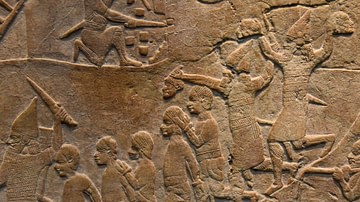
Image
Assyrian Soldiers Holding Decapitated Heads of Nubian Soldiers
Detail of a large gypsum wall panel, depicting the Assyrian attack on a fortress at the Egyptian city of Memphis in 667 BCE, Panel 17, Room M of the North Palace at Nineveh, Northern Mesopotamia, modern-day Iraq, Neo-Assyrian Empire, 645-635...
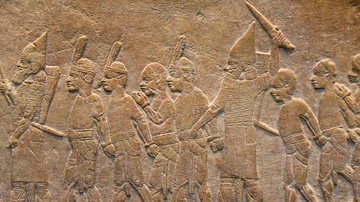
Image
Assyrian Soldiers with Nubian Prisoners
This is a detail of a large gypsum wall panel. The panel depicts the Assyrian attack on a fortress at the Egyptian city of Memphis in 667 BCE. Here the Nubian soldiers of King Taharqa (of the 25th Dynasty) are being led, as prisoners, by...
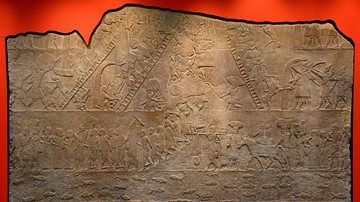
Image
Assyrian Army Attacking Memphis
Gypsum panel showing the Assyrian army attacking the Egyptian city of Memphis and commemorating the final victory of the Assyrian king Ashurbanipal II over the Egyptian king Taharqa in 667 BCE. Panel 17, Room M of the North Palace at Nineveh...
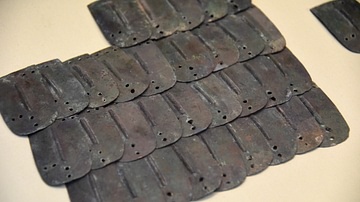
Image
Assyrian Scale Armor
Assyrian soldiers wore copper alloy armor made in segments aligned like fish-scales. Hole allowed the scales to be laced together and a central ridge maintained their alignment. The armor only protected the back and chest, thus allowing free...
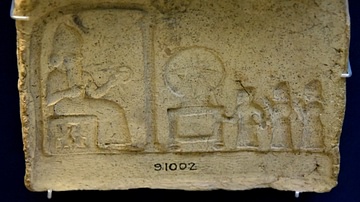
Image
Clay Cover of the Tablet of Shamash (II)
This is a fired clay cover of the sun god (Shamash) tablet. Its purpose was to protect the obverse side (face) of the tablet. It has retained the impression of the carved panel of the tablet. The Babylonian king Nabu-apla-iddina (reigned...
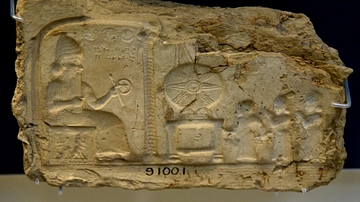
Image
Clay Cover of the Tablet of Shamash
This is a fired clay cover of the sun god (Shamash) tablet. Its purpose was to protect the obverse side (face) of the tablet. It has retained the impression of the carved panel of the tablet. The Babylonian king Nabu-apla-iddina (reigned...
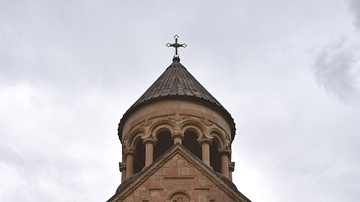
Image
Back Façade of Surb Astvatsatsin Church
This is the back façade of the Surb Astvatsatsin Church, which forms part of the medieval Noravank Monastery in present-day Armenia.
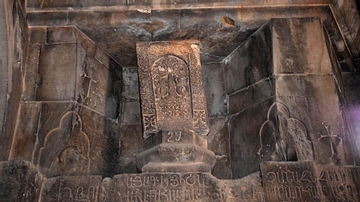
Image
Khachkar within Noravank Monastery's Surb Karapet Church
This exquisite khachkar lies within Noravank Monastery's Surb Karapet Church in Armenia.
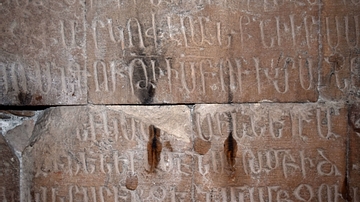
Image
Armenian Inscriptions in Surb Karapet Church
These Armenian Inscriptions in Noravank Monastery's Surb Karapet Church date from the Middle Ages.
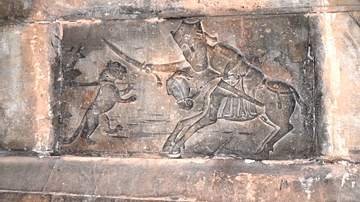
Image
Hunting Scene Bas-Relief at Noravank Monastery
This medieval bas-relief of a hunting scene is located within the Surb Karapet Church at Noravank Monastery in modern Armenia.